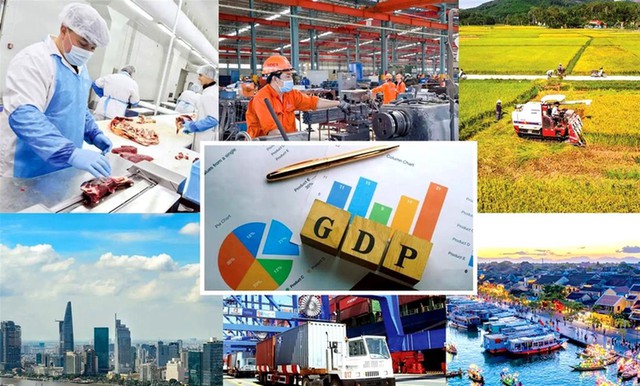Gov’t chief sets strategic course for fiscal, monetary policy management
VGP - Prime Minister Pham Minh Chinh outlined major orientations for coordination between fiscal and monetary policies to safeguard macroeconomic stability and achive the GDP growth target of 8.3–8.5 percent in 2025.

In a public telegram issued on September 7, 2025, Pham highlighted the Government's determiniation to materalize the 2025 GDP growth target, paving the way for double-digit growth in the following years.
To this end, the Prime Minister called on ministers, agency heads, local leaders, and executives of State-owned corporations to intensify the execution of Party, National Assembly, and Government policies, with a focus on targeted fiscal expansion.
The Ministry of Finance has been tasked with fine-tuning tax policies in line with development needs and income levels, strengthening budget revenue through digital transformation, stricter law enforcement, and broadening the tax base—particularly in e-commerce and food services.
The Government also aims to raise State budget revenue in 2025 by at least 25 percent compared tp the approved estimates, while strictly controlling regular expenditures and cutting wasteful spending.
Tax relief, fee reductions, and land rent deferrals will continue to support businesses and households, accompanied by streamlined administrative procedures to spur production and job creation.
Regarding public investment, ministries and localities are urged to address delays in disbursement, with priority given to major infrastructure projects in transport, energy, healthcare, and education. The target is to disburse at least 60 percent of 2025 capital by Q3 and 100 percent by this year's end, with funds from stagnant projects reallocated to active ones.
The Government will also push for more foreign direct investment, especially in large-scale, high-tech projects that reinforce global value chains. Administrative obstacles facing investors must be promptly resolved, while outbound investment is also encouraged. Efforts should be made to promote capital markets, stabilise stock and corporate bond markets, and prepare conditions for Viet Nam's upgrade from frontier to emerging market status.
The Government chief also underscores the importance of strengthening forecasting, closely monitor domestic and global developments, and respond quickly to external shocks.
The Ministry of Science and Technology and related agencies shall have to accelerate innovation and digital transformation projects financed by the State budget, while approving new projects funded by surplus 2024 revenues. Implementation of Politburo Resolution No. 57-NQ/TW must also be expedited through timely regulatory adjustments.
State-owned groups and corporations are expected to play a leading role by improving governance, enhancing efficiency, and aiming for at least 10 percent output or revenue growth in 2025, while driving forward key national infrastructure projects.
On the monetary issue, the State Bank of Viet Nam has to manage policy in a proactive, flexible, and timely manner, aligned with fiscal and macroeconomic strategies. Commercial banks are encouraged to cut costs, streamline procedures, and accelerate digitalisation to create room for interest rate reductions.
The central bank is also tasked with ensuring effective lending for social housing, infrastructure, digital transformation, and high-quality rice production. A roadmap must be developed to phase out the credit growth quota mechanism starting in 2026.
The Government targets to continue advancing cashless payments, digital banking, and flexible exchange rate management to ensure macroeconomic stability and safeguard the value of the Vietnamese dong.
Stricter control of gold market
On September 6, Prime Minister Pham Minh Chinh directed authorities to prevent manipulation, hoarding, and price gouging in the gold market. If necessary, he has called for both the inspection by the State Bank of Viet Nam (SBV) and the Government Inspectorate to get involved.
The move came as gold prices have been continuously rising over the past two weeks. Within this period, the price of gold has increased by about VND10 million per tael, which represents an increase of nearly 8 percent.
The Government issued Decree 232, dated August 26, 2025, granting permission for certain banks and companies that meet the required conditions to import and produce gold bars.
Experts forecast that in the medium to long term, the new regulations would likely bring domestic gold prices closer to global prices, with the price gap possibly fluctuating around a few percent, approximately VND4-5 million, instead of the current VND20 million difference.
However, the effects of these new regulations on domestic gold prices would take time and would not have an immediate impact, said experts./.

